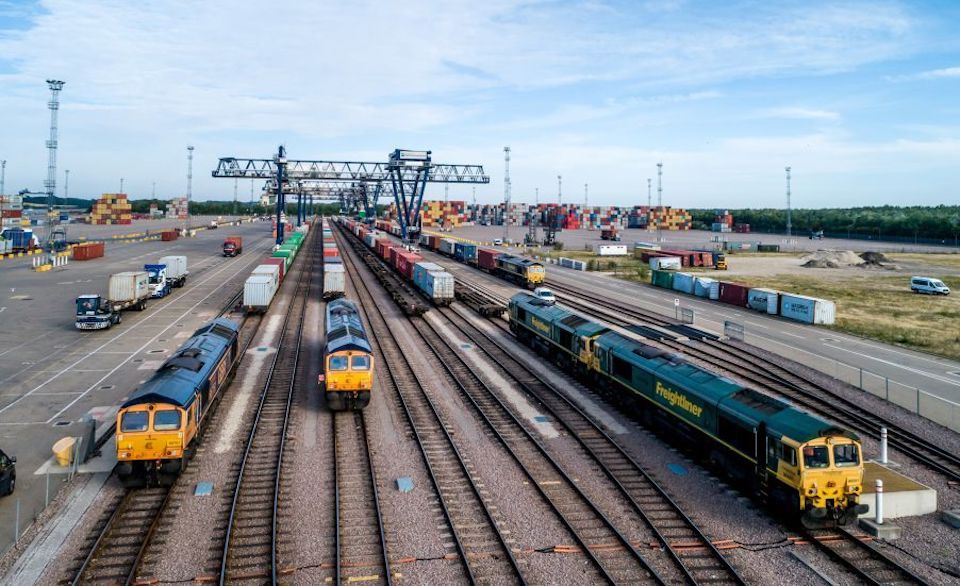Derailment at port of Felixstowe results in intermodal blockage

Britain’s busiest intermodal rail terminal is partly blocked by a derailment. Felixstowe, which is also Britain’s busiest marine sea container terminal, has a substantial fraction of its rail freight facilities out of action. An inbound intermodal train has derailed, causing significant infrastructure damage.
Rail freight operations at Felixstowe could be compromised for at least a week due to extensive damage caused by a derailment. According to unconfirmed reports, an early morning inbound intermodal train partly derailed the north spur into the port complex and then became seriously derailed at points within the port.
Complex track layout
Images published in local media sources show a GBRf hauled intermodal train, inbound into the port complex, derailed over points at the divergence for access to the north quay sidings and the south quay loops. The train appears to be slayed across the junction, suggesting that one or more bogies on case in the middle of the train have become derailed and failed to route correctly over the points. It would appear that safety mechanisms and potentially quick actions by the driver brought the train to an abrupt halt.

Felixstowe has a complex track layout, which may work to its advantage in these circumstances. A loop formed of the south quays and two connections to the passenger branch provides for alternative working from around half of the infrastructure. A junction at one corner of the loop provides access to the north terminal. It’s at this point that the train has derailed.
Delays in container movement
Swiss logistics company Kuehne + Nagel was the first to advise its customers of the incident. “Rail traffic to and from the Port of Felixstowe was halted earlier this morning,19 June, after a derailment incident at the port,” said their communique. “According to reports from the UK’s National Rail, the incident impacts all trains serving the UK’s largest port. Delays in container movement by rail are expected until rail tracks are cleared and repaired. The earliest date for reopening the railway for traffic is estimated to be Wednesday, 26 June.”

The duration of remedial work is yet to be confirmed. However, the incident will certainly be the subject of an investigation by the UK Rail Accident Investigation Branch. Felixstowe has experienced derailments in the past, but the port has maintained operations during previous incidents. Passenger services are not directly affected and appear to be running as normal.





